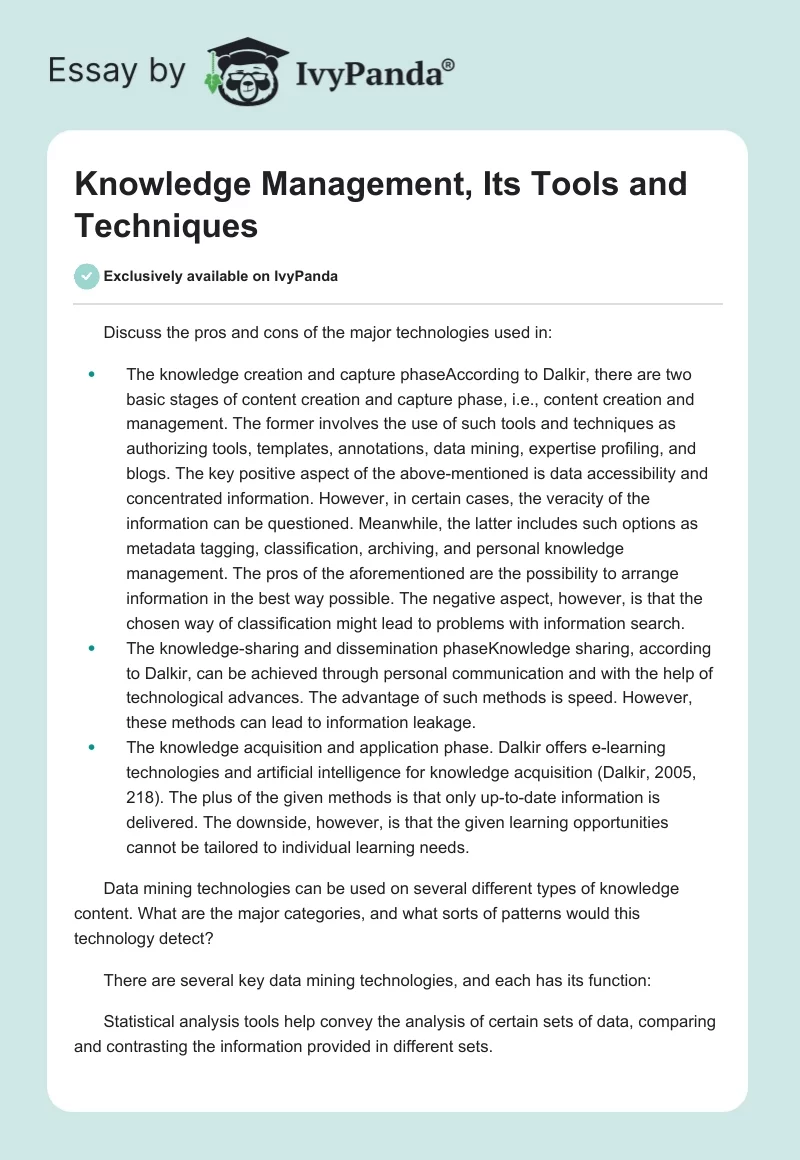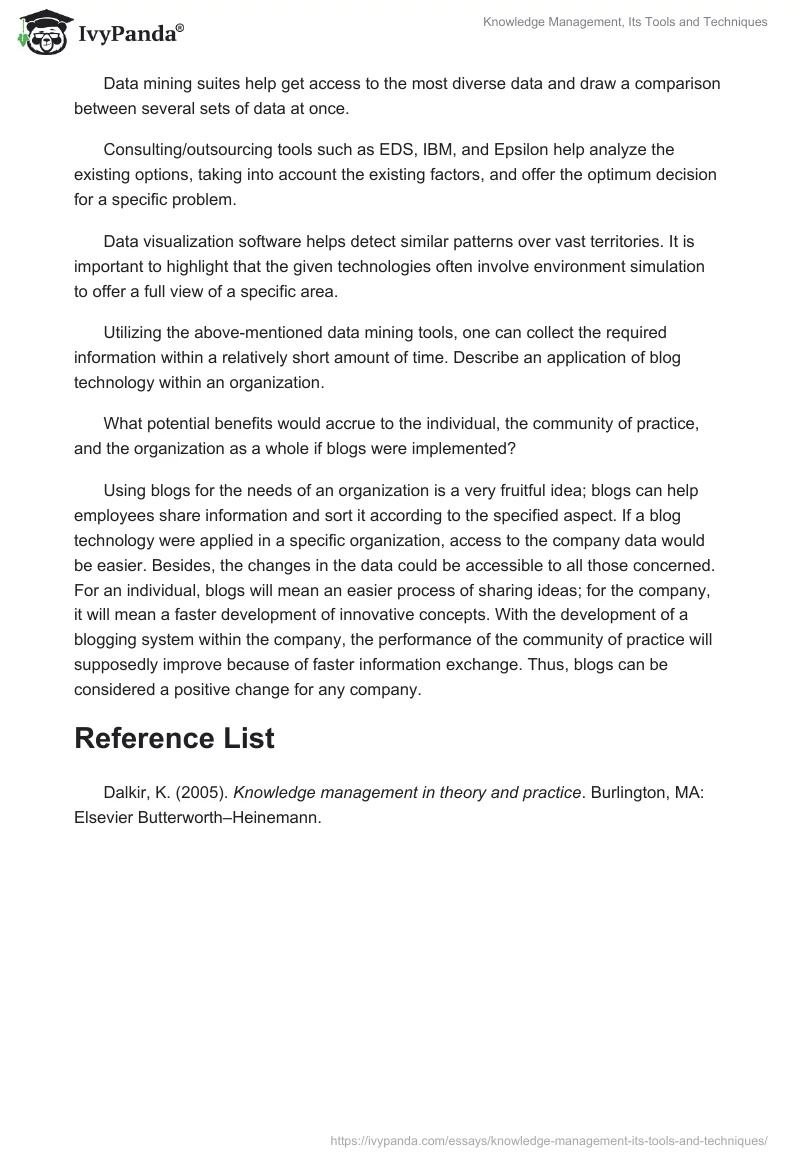Discuss the pros and cons of the major technologies used in:
- The knowledge creation and capture phaseAccording to Dalkir, there are two basic stages of content creation and capture phase, i.e., content creation and management. The former involves the use of such tools and techniques as authorizing tools, templates, annotations, data mining, expertise profiling, and blogs. The key positive aspect of the above-mentioned is data accessibility and concentrated information. However, in certain cases, the veracity of the information can be questioned. Meanwhile, the latter includes such options as metadata tagging, classification, archiving, and personal knowledge management. The pros of the aforementioned are the possibility to arrange information in the best way possible. The negative aspect, however, is that the chosen way of classification might lead to problems with information search.
- The knowledge-sharing and dissemination phaseKnowledge sharing, according to Dalkir, can be achieved through personal communication and with the help of technological advances. The advantage of such methods is speed. However, these methods can lead to information leakage.
- The knowledge acquisition and application phase. Dalkir offers e-learning technologies and artificial intelligence for knowledge acquisition (Dalkir, 2005, 218). The plus of the given methods is that only up-to-date information is delivered. The downside, however, is that the given learning opportunities cannot be tailored to individual learning needs.
Data mining technologies can be used on several different types of knowledge content. What are the major categories, and what sorts of patterns would this technology detect?
There are several key data mining technologies, and each has its function:
Statistical analysis tools help convey the analysis of certain sets of data, comparing and contrasting the information provided in different sets.
Data mining suites help get access to the most diverse data and draw a comparison between several sets of data at once.
Consulting/outsourcing tools such as EDS, IBM, and Epsilon help analyze the existing options, taking into account the existing factors, and offer the optimum decision for a specific problem.
Data visualization software helps detect similar patterns over vast territories. It is important to highlight that the given technologies often involve environment simulation to offer a full view of a specific area.
Utilizing the above-mentioned data mining tools, one can collect the required information within a relatively short amount of time. Describe an application of blog technology within an organization.
What potential benefits would accrue to the individual, the community of practice, and the organization as a whole if blogs were implemented?
Using blogs for the needs of an organization is a very fruitful idea; blogs can help employees share information and sort it according to the specified aspect. If a blog technology were applied in a specific organization, access to the company data would be easier. Besides, the changes in the data could be accessible to all those concerned. For an individual, blogs will mean an easier process of sharing ideas; for the company, it will mean a faster development of innovative concepts. With the development of a blogging system within the company, the performance of the community of practice will supposedly improve because of faster information exchange. Thus, blogs can be considered a positive change for any company.
Reference List
Dalkir, K. (2005). Knowledge management in theory and practice. Burlington, MA: Elsevier Butterworth–Heinemann.


